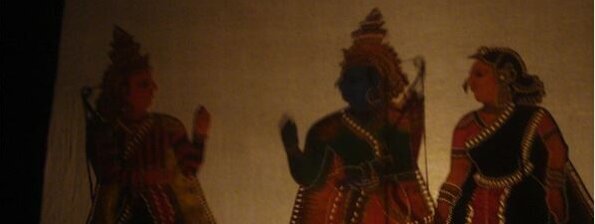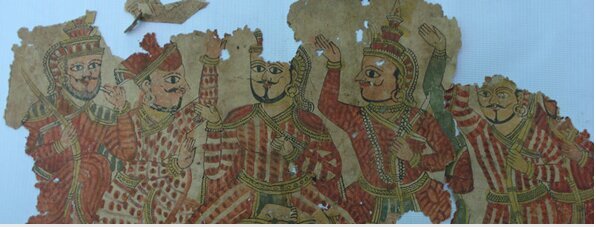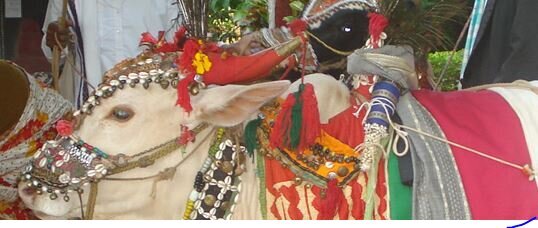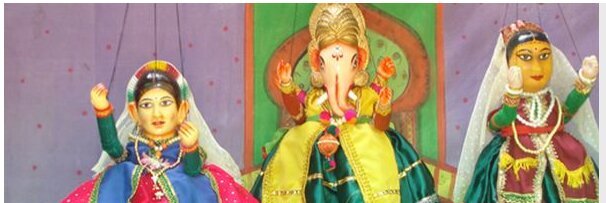Pinguli Chitrakatha Art | 03 May 2019
- "Chitra" means picture and "Katha" means story and the exponent called Chitrakathi is the person who narrates the story with the aid of some visual support. It is practised in Pinguli, a small village near Kudal, in the district of Sindhudurg in Maharashtra, dating back to the 17th century.
- It is tribal art, practised by Thakar tribe of Maharashtra. Thakar community is considered to be a scheduled tribe with a population of 2000 and the same is subdivided into thirty-six sub-castes or group-castes (Sub-caste is also known as Jamat).
- Broadly speaking, Chitra Katha is identified in four forms:
1. Leather Shadow Puppets
These two-dimensional profiles of mythological people cast haunting, colourful and vibrant shadows on a screen of thin cloth. The performance is usually at night, back-lit by huge oil lamp, with the complement of reading instrument and singing. The puppets are made out of leather beaten paper thin and painted by Natural dyes cut and perforated.
2. Stringed Wooden Puppets (Kalsutri)
The string puppets about 1.5ft in size are carved of wood and colourfully clothed. Their faces are painted representing mythological heroes, queens, demons & humble servants. The nimble fingers of Artist along with the singers and drum players create a fantastic three-dimensional drama full of spirit.
3. Picture Stories (known as Chitrakathi)

A series of paintings describing traditional stories are claimed to be with the Thakar community for over 300 years. The stories belong to Ramayana, Mahabharata and Nandi Puran. By showing painting and singing alongside the artist builds vivid narratives. The paintings are usually 12″x18″ and the paints are from natural sources. The sutradhar (narrator) unfolds the tale in the form of songs supported by the music of the vina, the taal and the huduk.
4. Bullock Art Show

These secret bull along with his master, the drum beater, roam around from house to house and village to village, blessing people and receiving alms. The bull is draped and ornamented with interpret embroidery bells and peacock feathers
- Many individuals from this tribe were craftsmen of one type of the other. The main occupation was to move from village to village and entertain people. Many of them used to work as spies of rulers and especially during the reign of Maratha Kings, they were very active. Under the pretext of narrating episodes from Ramayana and the Mahabharata through pictures, puppets and other visual aids they used to establish closer contact with the people, to extract political secrets and to furnish such information to the village heads.

